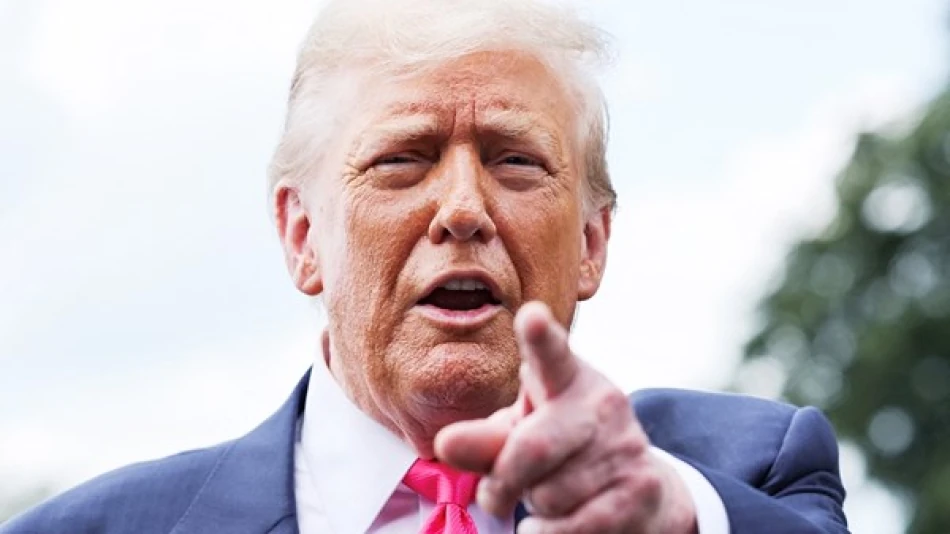
Trump Urges Ukraine to Avoid Targeting Moscow, Sparking Geopolitical Tensions
Trump's Mixed Signals on Ukraine Strategy Reveal Delicate Balancing Act
President Donald Trump publicly urged Ukraine on Tuesday to avoid targeting Moscow, contradicting earlier reports that he had privately encouraged President Volodymyr Zelensky to intensify attacks deep inside Russian territory. The apparent policy reversal highlights the administration's complex approach to managing the conflict while maintaining diplomatic flexibility with both sides.
Public Restraint vs. Private Encouragement
The contradiction emerged when Trump was asked directly by White House reporters whether Zelensky should target Moscow. "He should not do that," Trump responded, despite the Financial Times reporting earlier that he had encouraged his Ukrainian counterpart to escalate strikes within Russian borders, citing informed sources.
This discrepancy between public statements and private communications suggests a deliberate strategy of maintaining plausible deniability while potentially signaling different messages to different audiences. Such diplomatic ambiguity is not uncommon in conflict mediation, allowing leaders to preserve negotiating room.
Strategic Implications of the Moscow Red Line
Trump's public stance against targeting Moscow reflects broader geopolitical calculations. Strikes on the Russian capital would represent a significant escalation that could trigger unpredictable responses from the Kremlin, potentially drawing NATO allies deeper into the conflict.
Historical Precedent for Capital City Restraint
The reluctance to target enemy capitals has historical precedent in modern warfare. During the Cold War, proxy conflicts often maintained implicit boundaries to prevent direct superpower confrontation. Similarly, the current approach may reflect concerns about crossing thresholds that could lead to wider escalation.
Arms Supply Continues Despite Rhetorical Restraint
Despite urging restraint on Moscow targets, Trump approved new weapons shipments to Kiev through NATO channels earlier this week. This dual approach—providing military support while counseling tactical restraint—mirrors strategies used by previous administrations in managing proxy conflicts.
The continued arms flow suggests that while the administration may oppose certain high-profile targets, it remains committed to supporting Ukraine's broader military objectives. This nuanced position allows for military aid without appearing to directly endorse the most provocative actions.
Diplomatic Positioning for Future Negotiations
Trump's public restraint may serve future diplomatic purposes. By demonstrating that he counseled against targeting Moscow, the administration could position itself as a responsible mediator in eventual peace negotiations. This approach provides credibility with both sides—showing support for Ukraine while demonstrating restraint to Russia.
The strategy also aligns with Trump's stated goal of ending the conflict quickly, as avoiding maximum escalation preserves pathways to negotiated settlement. Such positioning could prove crucial if diplomatic opportunities emerge in the coming months.
Most Viewed News

 Layla Al Mansoori
Layla Al Mansoori






